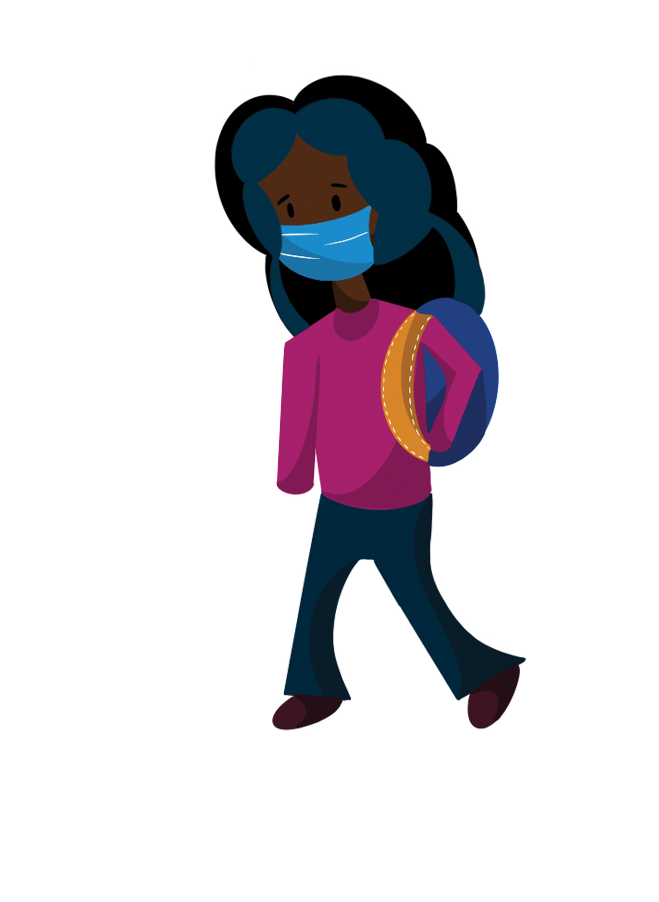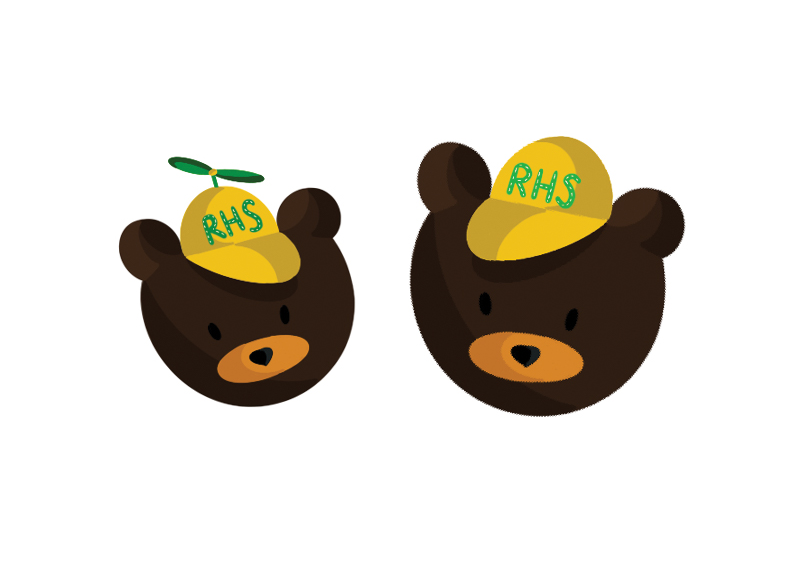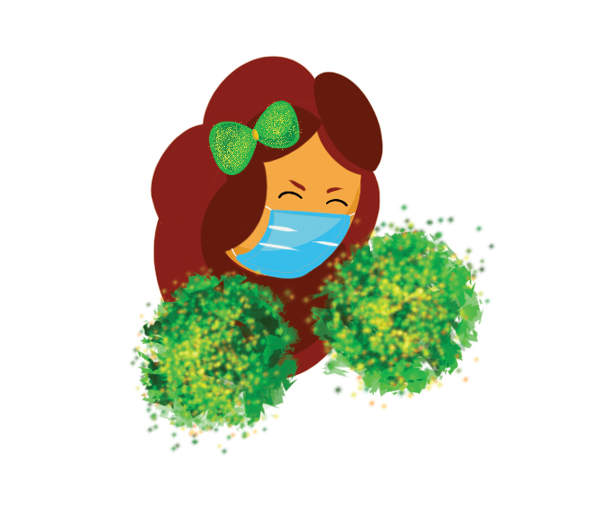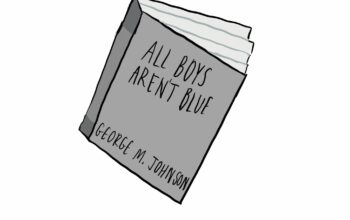Walking through the halls of Roosevelt High School on the first day of school has never felt so exhilarating. After 18 months, the days of entering endless Zoom meetings are over, and students finally have the opportunity to see their peers, some for the first time, face-to-face.
From late night sports games, to spirit assemblies, club meetings, and the return of the arts, reuniting has brought back many of the events and extracurriculars that make up Roosevelt as an institution.
And yet, students and staff alike face a new dilemma: After being isolated and growing apart from one another for nearly two years, how do students define what it means to be a community?

Mental Health and a Sense of Disconnection
Extended quarantine caused many students to feel relatively disconnected from Roosevelt over the course of the past year. In fact, the annual climate survey conducted by Seattle Public Schools last spring revealed that 58% of students felt that COVID-19 had negatively impacted their communal connection to Roosevelt.
All of which impacts both student mental health and overall sense of belonging within the larger student body.
“I did not work well during quarantine, and I was probably at one of my lowest points mental health wise,” says Roosevelt junior, Victoria Macabú. “I’ve had […] different friend groups come to me and tell me about their concern about how they’re feeling really stressed, or how they’re […] overwhelmed and how they just don’t even want to do school anymore.”
A recent poll conducted by The Roosevelt News surveying 65 students not only found that this feeling was shared among a majority of respondents, but that another sizable percentage felt that their mental health declined further after returning to in-person learning. When asked if their mental state has gotten better, worse, or stayed the same since the start of the school year, 38.5% of students said that it had actually decreased.
“Everything is super overwhelming and stressful now that we are back in person,” stated one anonymous student.
This sentiment was echoed by community members across Roosevelt, staff included. “I think teachers are trying to ramp everything back up to normal, and things aren’t normal yet,” says Ian Malcolm, a Roosevelt social studies teacher. “So there’s a lot of stress having a six period day […] There’s a lot of stress with […] sitting in a seat for six straight hours, and then having […] three hours of homework a night. […] They’re expected to do work, and conform, and be ready to be students, […] [but] they’re not. ”
Roosevelt senior Maco Dacanay expressed a similar sentiment, stating that ”Everyone’s kind of rocked from quarantine. And it was kind of rough for a lot of people in a lot of different ways.” He added that upon returning for the first time, the community felt disconnected. “[But] I think as time goes on, we’re gonna get better. We are getting better,” remarks Dacanay.

Grade Imposter Syndrome
Another major challenge to returning to school in the building has been a widespread feeling of insecurity among students surrounding the grade that they’re in. A majority of students (61.5%) stated they do not feel as if they belong in their current class.
“Personally, as a senior, I still feel like a junior,” says Dacanay. “[And] I miss the class of 2021 and 2020. I do feel like we missed out on quite a big chunk. But this is the year that we get to gain it all back.”
Another anonymous student agreed, saying, “As a senior, I sometimes don’t feel secure enough in the fact that I’m graduating this summer.”
This experience has left some students reminiscent of the time they missed out on and what high school was like pre-pandemic. Losing months off what is often called ‘the best few years of your life’ can be a hard emotion for many to overcome.
Reconnecting With Peers
This said, others have found the transition to be easier than expected. Mio Dacanay, a Roosevelt sophomore, says that his mental health has “definitely improved, because online school was rough for me. But I know a lot of people did prefer online school as it was more lenient.”
In fact, nearly a third of Roosevelt students responded to The Roosevelt News that their mental health has become better since returning (36.9%), with the social aspect of in-person learning being the most common answer as to why.

One anonymous student explains how “It’s so much easier to be motivated to do work when you’re seeing your friends and teachers every day and having a real high school experience.”
Coming back to school had a positive impact on underclassmen in particular, many of whom had been unable to connect with or get to know their peers over online learning, despite being in classes together an entire academic year.
“[I] definitely [feel] more [connected] just because I can physically be there,” says Dacanay. “And I can actually talk to the people since I didn’t really do that online, because it was just in the chat.”
While personal experiences play a large role in shaping how one perceives online school, data shows that the majority of students enjoy being in-person more. According to the most recent spring climate survey conducted by Seattle Public Schools, 74% of respondents preferred in-person learning, whereas hybrid and fully remote learning received a combined 26% of the votes.
Indeed, many students have come to view the start of this past semester as a fresh start. “I’ve changed so much during quarantine,” reflects Dacanay when asked if they experienced or noticed change among individuals at Roosevelt. “I know so many others who have; […] it’s a new slate for us.”
“There’s also people that have entirely changed, their wardrobes different or personalities a little bit different, the way they talk is a little bit different,” says Macabú. “That can be reflective of us […] being in a different environment for like, pretty much over a year.”
This collective change arguably signifies a major difference in Roosevelt as a community – a shift toward unrestrained self expression among the student body as a result of this period of personal growth apart from one another.

Reclaiming School Spirit and a Culture of Pride
Since reopening full time, Roosevelt has begun to reclaim another core tenet of its school identity: abundant spirit.
Whether it’s the drumline marching through the halls on a Friday morning before game day, lunchtime Kahoot games in the commons, or Principal HkwauaQueJol Hollins cheering on the students through his morning green-and-gold pep talk, attempts at reviving school pride have returned full force.
When asked about how Roosevelt spirit this year compares to previous semesters, Macabú says, “From the underclassmen [there is] significantly less [spirit]; from the upperclassmen, I would say probably the same amount in the past years.”
This is a common belief among many students across all grades. Dacanay says that “especially during the assemblies, [underclassmen] don’t participate as much as they could.”
Part of this could be attributed to the fact that this is the first time most freshmen and sophomores are in the school building for extended periods of time; many haven´t had the opportunity to gain the same sense of pride in Roosevelt or feel as connected to the school’s culture.
While school spirit among underclassmen may appear to be declining, a different trend emerges when looking at Roosevelt as whole. In a poll by The Roosevelt News, 46.3% of respondents voted that they believe overall school spirit has been higher this year than in years past, 29.6% believed it has stayed the same, and only 24.1% believed it has declined.
With all the struggles the community has shared throughout nearly two years of isolation, it seems these experiences have created a newly connected and energized community, teaching many to not take time together for granted. While members of the community have experienced varying degrees of the effects of COVID-19, through shared challenge, isolation, internal growth, and change, this connection has shaped not only individuals, but has also brought together the school community as a whole.



